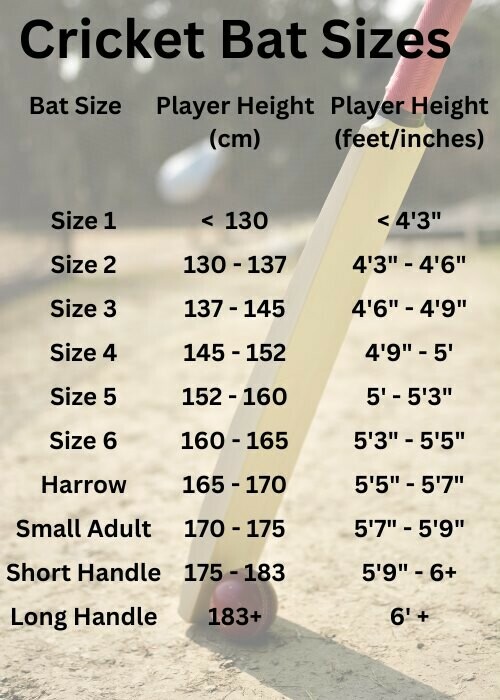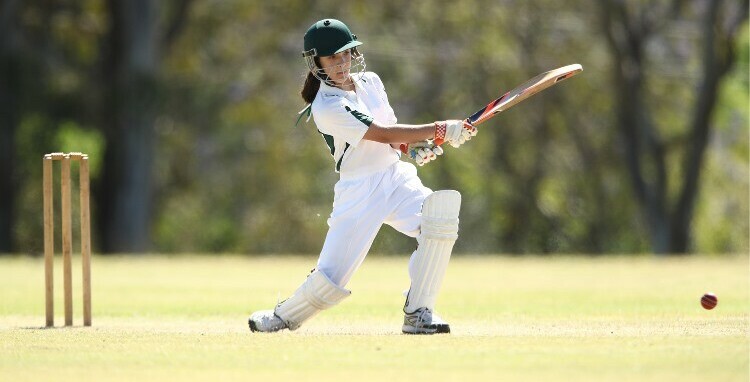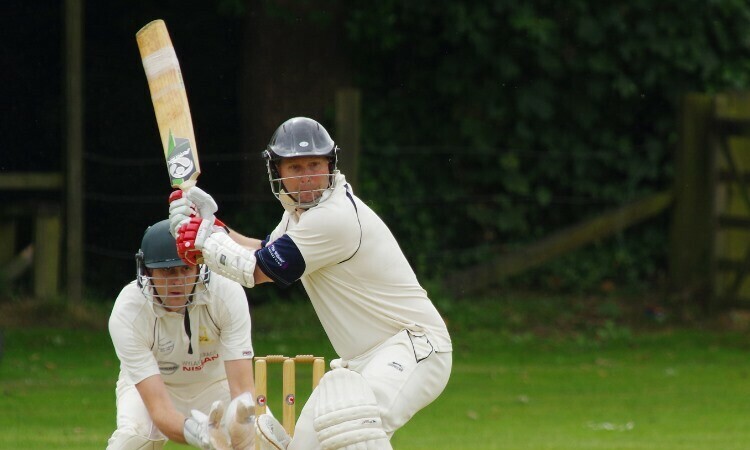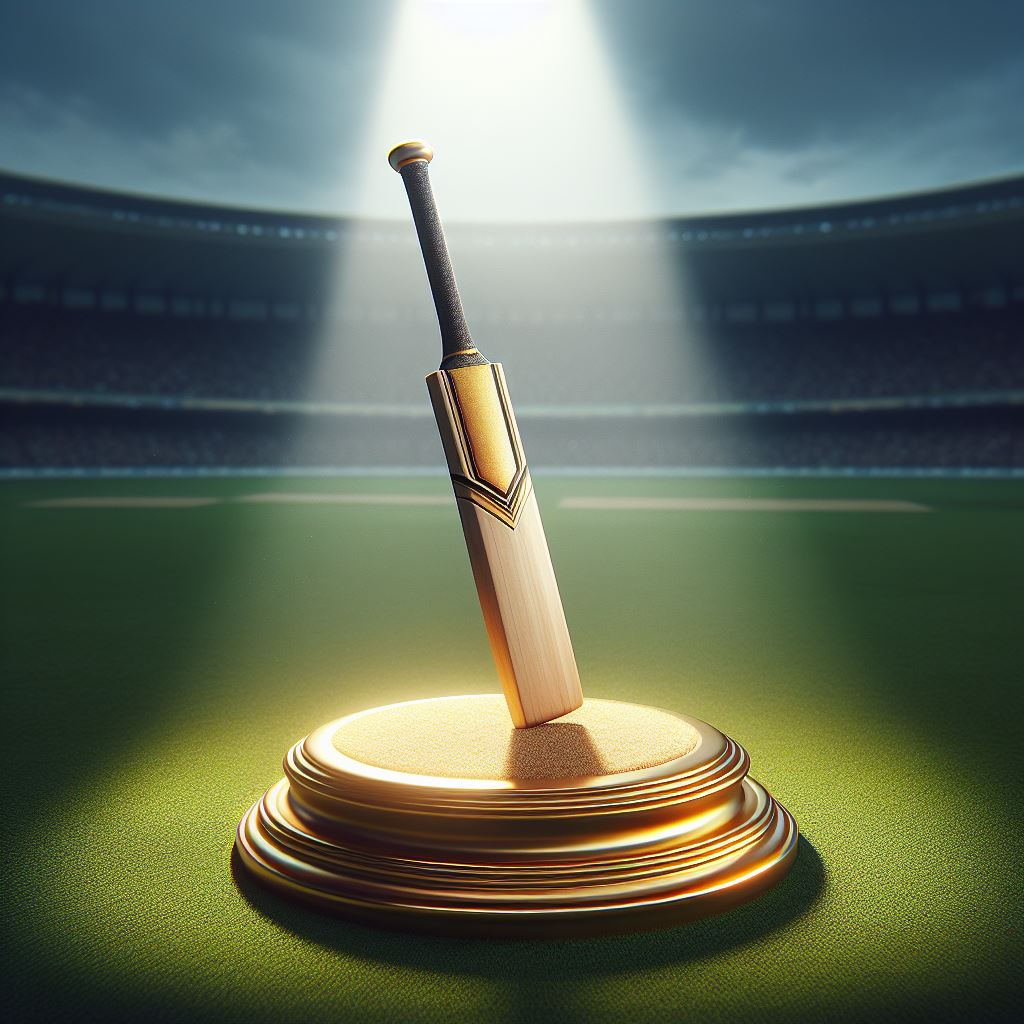For many people, cricket is more than just a sport. It’s something that brings families together. As parents, guardians or mentors, guiding our young cricketers in their sporting journey is both a privilege and an important responsibility.
One crucial aspect of nurturing their love for the game is ensuring our future Test Captains have the right equipment. And that starts with having the right sized bat.
Understanding the importance of choosing the right size cricket bat for young batters
Just as the right equipment is essential in other sports, selecting the appropriate cricket bat size is paramount for young players. It’s not just about having a comfortable bat; the size of the bat directly influences their playing performances and skill development.
The size of a young person’s bat hinders a player’s ability to execute shots effectively. If a bat is too heavy, or too long, one obvious problem would be that the child would not be able to lift it. And even if the child can lift it, he or she still needs to be able to wield the bat effectively. A bat that is the wrong size or weight can lead to poor technique, a lack of power and an increased risk of injury.
On the other hand, if the bat is too short, or too light, this too can lead to poor technique and a lack of power. To compensate for the cricket bat’s lack of power, the child will have to swing the bat far harder, and as a well known cricket coaching saying goes, ‘Big Swing, No Ding.’
Finding the right balance is crucial for maximizing your child’s potential on the field and nurturing their skills as they grow.
Brief overview of bat size categories: from children to adults

Cricket bats come in a range of sizes tailored to different age groups and skill levels. From the tiniest of tots just starting out their cricketing journey to seasoned adult players, there’s a bat size suited for all players.
The smallest size of cricket bat is Size 1. These are for kids less than 130 centimetres tall, or less than 4 foot 3 inches. These might suit kids as young as 4 or 5.
Following that is Size 2. These are best suited to children between 130 and 137 centimetres tall, or between 4 foot 3 and 4 foot 6 inches tall. These suit kids of around 6 and 7 years of age.
Naturally, following Size 2 is Size 3, which are best for those kids between 137 and 145 centimetres, which is between 4 foot 6 and 4 foot 9 inches tall. Age wise, you are thinking about 8 or 9.
Size 4 follows Size 3, obviously, and these would be best for kids between 145 and 152 centimetres, or 4 foot 9 to 5 foot in the old measure. This, then, would be appropriate for your 9 to 11 year olds.
Next is size 5. This would be best for kids 152 to 160 centimetres tall, or 5 foot to 5 foot 3. On average, this would be for 10 to 12 year olds.
Size 6 is aimed at kids 160 to 165 centimetres tall, which is 5 for 3 to 5 foot 5. Now, we are getting to young teenager territory.
You might think Size 7 comes next, but no. We are now beyond the ‘junior’ level of cricket, but not yet at the ‘senior’ level. So, the intermediate level is called ‘Harrow’, and this is aimed at teenagers in the 165 to 170 centimetre range, or 5 foot 5 to 5 foot 7 inch.
The first of the senior levels is called Small Adult, or sometimes Academy. These are for people between 170 and 175 centimetres tall, or 5 foot 7 to 5 foot 9.
Then comes Short Handle, which is best for people 175 to 183 centimetres, or 5 foot 9 to 6 foot.
And finally there is the Long Handle size, which is best for people taller than 183 centimetres or 6 feet.
Tips for parents on selecting the correct bat for their child’s age and height
The height guide above is a handy guide, and another good rule of thumb is to choose a bat that reaches from the ground up to the hip bone when standing upright. Another handy tip is to ensure that the recipient of the cricket bat actually holds it, and is able to swing it comfortably.
When to consider upgrading to a larger bat
As children begin to grow and develop their cricketing skills, they may outgrow their current bat. Keep an eye on your child’s height and strength development. Remember, it is not just about the height of the bat, but also it’s weight. Bigger bats naturally require more strength to wield; your young one may be tall enough to go to the next size of cricket bat, but are they strong enough?
By prioritizing the correct bat size for children and young players, parents and coaches can help nurture their passion for cricket while ensuring a safe and enjoyable experience on the field.
The transition period: moving from junior to adult bat sizes

As kids grow into teenagers and teenagers grow into adults, their batting technique and power also evolve, necessitating a bat that can keep up with their changing needs. It’s essential for teenagers and their parents or guardians to recognize when it’s time to make the switch to an adult-size bat to support their continued growth and development as cricketers.
Recommendations for casual adult cricket players looking to enjoy the sport
Taller players may benefit from longer bats to maximize their reach and leverage, while shorter players may find better control and manoeuvrability with slightly shorter bats. Casual adult cricket players looking to enjoy the sport without the pressure of competitive play can afford to be more flexible with their bat choices.
The top level cricket bats used by your favourite test or T20 players are very expensive, as they use improvements in technology to ensure a lightweight bat that is still incredibly powerful. Sometimes the bat is specifically made for the player, based on their individual preference and abilities. An aggressive player may want to have a bat with a much thicker middle, yet still light enough for them to swing it with ease.
These types of cricket bats are usually not available to the everyday cricketer, and if you are just someone playing for the fun of it, you don’t need that type of bat. You want a bat that feels comfortable in your hands, a bat you can swing wildly if that’s your style, or more delicately if that’s your preference. When picking up a cricket bat, you should not feel like you would struggle wielding the bat for forty, fifty, sixty or more balls, while running from one end of the cricket pitch to the other.
The value of expert advice from coaches or professional fittings
Finally, for both teenagers and casual adult players, seeking expert advice from coaches or undergoing professional bat fittings can greatly aid in selecting the perfect bat size. Coaches can provide personalized guidance based on a player’s individual strengths, weaknesses, and playing style, while professional fittings ensure that the bat is tailored to the player’s specific requirements.
By considering factors such as transition periods, height, playing style, and seeking expert advice, teenagers and casual adult players can confidently select the perfect bat size to enhance their cricketing experience.
Criteria for choosing a cricket bat for serious adult players

For competitive adult players, choosing the right cricket bat involves more than just the size of the bat. Factors beyond the scope of this article need to be taken into consideration, such as bat profile, blade width, handle shape and sweet spot location. Serious players often seek bats that offer a perfect balance of power, control and manoeuvrability to suit their individual playing style.
While some players may experiment with different bat sizes and styles throughout their cricketing career, others may prefer to stick with what works for them. As adult players mature in their game, they often develop a strong preference for a particular bat size and model that feels comfortable and familiar. Consistency in bat size and weight can contribute to improved performance and confidence on the field, making it a wise choice for many competitive adult players.
Conclusion
Selecting the right cricket bat for a growing child can be difficult. They will grow out of one bat, and into another, and then out of that one too. Above all else, the bat should be comfortable to the child. He or she should not struggle to lift it. They should be able to swing the bat without the bat being too difficult to control.
Sometimes this takes time for a parent, or even an adult coming back into the game. A cricket bat is the most important object in the game of cricket. Without a cricket bat, you are just standing in front of the stumps waiting to get hit by a cricket ball. Find the right size bat for you, and make sure to enjoy the game.

